Premature Infants 1901
Premature Infants
By Vanderpoel Adriance, M.D.,
of New York.
American Journal of the Medical Sciences 121:410-421, 1901.
I have selected the subject of premature infants because it has been inadvertently neglected. The theme is far from hackneyed; and as I have had unusual facilities for observing this class of patients at the Nursery and Child’s Hospital of this city, it is hoped the subject may be of interest. Records of forty cases are in my possession, of which a large majority have come under my observation clinically or on the autopsy table.
On examining a premature infant we are impressed with its general diminutive characteristics, with which the excessively developed head ill corresponds. The skin is a raw, cinnamon-red, and presents lanugo in proportion to the period of prematurity, while the lack of subcutaneous fat gives the skin a wrinkled appearance and the face an expression of senility. The greater the period of prematurity the more marked the torpor and inactivity of the child. The limbs evince little motion, and the occasional feeble whine contrasts strongly with the cry of the healthful full-term infant. During the first days the eyes are constantly closed, and the child passes its time in torpid somnolence, never displaying even the wandering stare that a full-term infant shows through its half-open lids.
The nails are soft and do not reach the ends of the digits; this is even more noticeable on the toes. The wide-open fontanelles and sutures give a yielding character to the cranial vault, and the bones are so soft and pliable that the symmetry of the skull is easily destroyed by pressure. If temporary, the bones quickly resume their proper relations; but if by lying in one position, as is so often the case, the weight of the head falls continuously upon one side, a marked deformity develops.
Even a full-term infant experiences a contrast during its first days of independent existence, and beings a struggle which ill suits the lazy habits acquired in utero; unceremoniously forced from its parasitic life, it is now compelled to do its own work and earn its own livelihood. During the first days of its struggle for existence many succumb to the novel conditions.
If hard upon the full-term infant, how much more difficult the effort for the prematurely born, all too soon thrust into an unsuitable environment where each undeveloped organ must be subjected to an unaccustomed strain. As if in protest, the vigorous infant sets up a howl, but the weak lungs of the premature can but feebly whine a denunciation of the entire process. Thus begins a series of respiratory gymnastics which must be independently maintained throughout life.
The greatest task undertaken by the premature infant is the maintenance of its body heat. In utero this is passively received from and governed by the mother, but at birth the infant passes from the uniform temperature of the amniotic fluid to the lower and variable temperature of the air. From this time the uneducated heat centre struggles to so control the manufacture and loss of heat that a normal temperature may be maintained.
The last chart (V) shows the temperature of an infant born at the twenty-ninth week. Its birth-weight was only three pounds. For nine days the temperature remained subnormal. This may have been due to the lack of vitality which did not permit of proper heat production, or, what is more likely, to an excessive heat loss. It is a well-known physiological fact that the smaller the individual the greater is the proportion of body surface exposed for radiation, and consequently premature infants are compelled from their diminutive size to manufacture a greater proportional amount of heat. Unjust as it seems, then, the smaller and more premature the infant the greater is the task imposed. It is hardly to be expected that the uneducated heat centre can be forced to that nicety of control which exists after the mature training of adult life.
In the premature infant it is especially erratic during the first days of life. The infant may maintain a high range of temperature, in which case the fuel of the body is unnecessarily consumed and the constitution weakened; or the temperature may remain subnormal, this being an index that the vitality of the child is low and death may be impending. More frequently the temperature runs an up-and-down course, at times high and at times low, and days may elapse before the normal is approximated. An irregular temperature may be considered quite the normal, and no further cause need be assigned than the prematurity of the infant.
Secondly, changes in temperature may be due to gastro-intestinal symptoms, to which these infants are particularly prone. Constipation, looseness of the bowels, and attacks of vomiting frequently cause a sharp rise in temperature. An overheated incubator may cause a miniature heat prostration, which, fortunately, needs no more active treatment than a more careful regulation of the heat supply.
In order to understand the irregularities of respiration it is necessary to study the embryology and pathology of the lung. During fetal life no alveoli exist prior to the fourth month, and the bronchial tubes are widely separated by mesenchyma. As the lungs develop the ramifications of the tubes extent rapidly. In the prematurely born the alveoli are surrounded by an excessive amount of connective tissue and are poorly developed, so that they contrast strongly with the superabundant bronchi. The vascular structure of the lungs is composed of a rich, unsupported capillary network whose elastic walls are easily overdistended and led to enroach upon the air vesicles. The feeble respiration permits of collapse of the air vesicles and engorgement of the vessels, resulting in hypostasis and atelectasis of the posterior and dependent lobes. Autopsies upon this class of patients in the first days of life seldom reveal completely aërated lung, patches of atelectasis being seen in a greater or less degree.
The bony framework of the thorax is non-resistant and elastic, so that during forced inspiration the chest-wall sinks in. With such an ill adapted chest-wall and poorly developed lungs the gasps of the infant are disappointingly ineffective.
After it is first established the respiratory centre is unstable and the action of the lungs irregular. A respiratory rhythm resembling the Cheyne-Stokes is frequently seen. The primary respirations are likely to be delayed or so feeble as to require treatment. Even after being first stimulated to its task the respiratory centre may fail and an attack of cyanosis ensue. In adult life such a plight would automatically stimulate the respiratory centre to action, but under these conditions prompt treatment must relieve the dyspnoea, or the helpless infant may gasp in vain. One attack of cyanosis is apt to be followed by another, each becoming more urgent, until at last death ensues. This is one of the most frequent terminations of the prematurely born.
Of the 40 cases of which I have records 11 had cyanotic attacks, causing 4 deaths; while 2 others died of cyanosis and complicating symptoms. That the liability to these attacks is increased by the period of prematurity is seen by the fact that six of these cases occurred in children born in the twenty-eighth, twenty-ninth, and thirtieth weeks, while only five are recorded thereafter. They are also peculiar to the first days of life, and in the series under consideration no deaths were caused by them after the tenth day of life.
The ductus arteriosus and foramen ovale appeared to have no part in these attacks of cyanosis, for both post-mortem and clinical evidence demonstrated a closure of these structures.
The independent maintenance of a regular temperature and respiratory action is not attempted until after birth, but the heart in utero has had preliminary education, and its action is consequently more regular than that of respiration. Still, it is not as machine-like as when experienced in its task, and occasionally falters. In fact, death may ensue from simple cardiac failure. In the records in my possession four died from no assignable cause. The machinery refused to work, and in this breakdown the heart probably played a part.
The kidneys, like other vital organs, may balk in their duty; often a day goes by without any urine being passed, and occasionally it is longer delayed. Uric acid is secreted in abundance, as evidenced by the frequent pink stain upon the napkins, and inspection of the kidneys reveals fan-shaped infarctions of uric acid in the pyramids.
Another frequent symptom of prematurity is a general oedema. It is difficult to say to what this is due. It may be the feeble heart, the balking kidneys, or the anaemia of the infant.
Premature infants possess at birth an excessive amount of haemoglobin, but it appears to be loosely bound in the red corpuscle, and there is a decided tendency to development of the anaemic state. Ofttimes we are impressed with the waxy whiteness of the occupant of the incubator; this is simply an exaggeration of the loss of haemoglobin which occurs during the first three weeks of a full-term infants life. Destruction of haemoglobin is active in both cases, but, as in other constructive processes, the organism of the premature is tardy in fulfilling its duty.
The weight of the child is the best guide we have as to its condition, and its birth-weight is an index to its vitality. The premature weigh less and gain more slowly than the full-term infants, but the slight variations in weight are all-important, and it is not until there is a steady gain that proper progress is assured, and, on the other hand, a steady loss is threatening. A normal full-term infant loses weight for three days, and then makes steady gains until the birth-weight is regained by the tenth day. In the premature the constructive processes are slower, and the average of the cases under consideration do not show the birth-weight regained until the thirty-first day. The more premature the infant the slower the process of tissue formation, and months may elapse before the Liliputian characteristics are lost.
Period of
Prematurity.Diseases of
Prematurity
(died).Diseases of
later life (died).Discharged. In Hospital. 28 weeks 5 29 weeks 1 30 weeks 4 2 31 weeks 1 32 weeks 1 1 33 weeks 1 1 34 weeks 1 1 35 weeks 2 5 36 weeks 2 2 37 weeks 4 1 3 38 weeks 2 Total 13 11 13 3
Of the 40 cases reported 16 were discharged or are still inmates of the Nursery and Child’s Hospital, while 24 died. All the children born in the twenty-eighth week succumbed in a few hours or days. One born in the twenty-ninth week was making good gains and doing nicely, when he contracted measles at nine months of age and died of a complicating pneumonia. It is unfortunate that so many cases like this terminated in death due simply to extraneous causes, and not attributable to prematurity. This fact has made an unwarranted increase in the death rate. Of the 24 deaths 11 are attributable to the infantile diseases of later life, none of these dying until the period of full term was passed. Measles and pneumonia killed 2, pneumonia 1, while marasmus caused 7 deaths. None of these children died until after they had passed the nine months of uterine life, consequently cannot be said to have died of prematurity per se. Their deaths can be ascribed to the usual conditions which threaten the life of any infant in an institution; still the large death-rate from malnutrition naturally suggests a predisposition to an unbalanced nutrition. The patients did remarkably well as long as mother’s milk could be obtained, but the death-rate was increased by the scarcity of the supply. This compelled the administration of a substitute feeding as soon as the critical days were past. Artificial feeding, together with the unhygienic conditions of institution life, were large factors in the death rate.
Causes of Death
No evident cause 4 Hemorrhages 2 Cyanosis 4 Cyanosis and hemorrhages 1 Anaemia 1 Anaemia and catarrhal colitis 1 Anasarca and cyanosis 1 Malnutrition 7 Gastro-enteritis 1 Measles and pneumonia 2 Total 24 Causes of Death.
Thirteen died of disease peculiar to prematurity; of these, cyanosis killed four. Three deaths are recorded from cyanotic attacks during the first four days and only one as late as the tenth. Autopsies in these cases showed the condition was due to atelectasis of the lungs. Four cases died of no assignable cause. Although these cannot be safely classified as due to heart-failure, no doubt disturbance of that organ was a determining factor. Two deaths were caused by hemorrhage pure and simple. Autopsy in one of these cases showed large clots in the lateral ventricles, while in the other the hemorrhage was located in the suprarenal capsules and broke, forming a large retroperitoneal clot. One infant died of a combination of cyanosis and hemorrhages; blood was passed from the mouth, nose, vagina, and rectum.
In one case a marked anaemia appeared to be the only cause of death. A general oedema, combined with cyanosis, killed one. It is a common observation that premature infants show little resistance to infection, and without proper precautions may die of sepsis. Fortunately, in the present series no deaths are recognized from that cause.
Prognosis. The more premature infant the more hazardous the outlook. Few infants born before the twenty-ninth week are saved. The temperature has no prognostic value.
Attacks of cyanosis are not necessarily fatal, and if the infant withstands them during the first few days the case becomes more hopeful, the attacks gradually diminishing in significance as time goes on.
Continued loss of weight is discouraging, and the sooner a steady gain in weight is recorded the better. Some time must elapse before the nutritive processes have developed a healthy body; but once well started the extra-uterine growth of the child should be healthy, although perchance tardy. A tendency toward malnutrition, however, should be guarded against.
Treatment. Some premature infants demand no more treatment than those born at full term, and of this class it is hardly necessary to speak. Let us rather confine our attention to those whose demands are the most exacting.
The proper treatment of the premature infant requires excessive attention to details. We are apt to consider an incubator the one and only requisite; but while it is quite necessary, it is vain to place reliance upon it to the neglect of the exacting duties of everyday life. The premature infant demands as nearly as possible the conditions experienced in utero, and every effort must be made to simulate this environment. The child in utero rests in a warm chamber, bathed, as we may say, on every side by a water bed, while the body-wall of the mother shields it from external violence. No ray of light or sound from the external world disturbs its delightful slumber. These conditions we must strive to stimulate artificially, and the incubator must be dark and quiet, while the temperature is carefully regulated. It is not essential to discuss the mechanics of the incubator, which are described in various text-books. It is only necessary to say that the temperature should be controlled to meet the various conditions. If the infant is very puny and in an early stage of prematurity the temperature of the incubator must be high at the onset; 95° F. is well tolerated in these cases. It is exceptional for as high temperature as this to be required for any length of time. In the ordinary case 90° F. is high enough. A temperature-chart recording a continued low range indicates that the heat-producing power of the infant must be artificially aided, while a state of fever may be better controlled if the temperature of the incubator is reduced.
Only careful watching can satisfactorily accomplish our object. Often the patient’s temperature is abnormally increased by the excessive heat of the incubator, but promptly falls when this is properly regulated by the nurse.
A high temperature should be gradually reduced as the vitality and animal heat of the patient indicate, but the incubator will at least be required until the child has reached an age corresponding to full term, and in many cases longer.
During incubator life the reduction in temperature must be gradual until it corresponds to that of the open room, and the child is by degrees educated to existence outside the incubator.
It is useless to lay down arbitrary rules for the temperature of the incubator. It is only by close observation and good sense that it can be properly regulated.
If possible it would be better to forbid any disturbance of the infant whatever, but attention to the toilet demands a certain amount of handling. Fondling and unnecessary handling strain the heart and cause unaccustomed sensations, which are more deleterious than ordinarily appreciated. They should be strictly forbidden. Baths are to be prohibited for several days, and if the buttocks are soiled the necessary cleansing can be accomplished with a bit of moist absorbent cotton. Even the napkin is easily dispensed with and its place taken by a bit of soft cotton, which absorbs the urine and receives the feces. This can be replaced without disturbing the infant.
The simpler the clothing and the fewer the pins and fastenings the better. Our idea is well realized in a shirt which opens down the entire front and it long enough to completely cover the feet. This should be made of an inexpensive material, so that it can be destroyed when soiled, and should be so soft that it will not irritate the sensitive skin. No material suits the purpose better than cotton sewed between two layers of fine cheese-cloth. Wrapped in this, the infant should repose on the softest possible couch, and only be disturbed for feedings or changes in the toilet.
Without daily weighing it is difficult to judge of the infant’s progress, but in most cases it had better be dispensed with and the observer content himself with a record of the weight at infrequent intervals.
The attacks of cyanosis are serious, and each attack should be properly treated by the administration of oxygen and minim doses of whiskey. This symptom frequently appears after taking food, and if any of the milk has found its way into the larynx and trachea it should be promptly removed by the inversion of the infant and by patting the back. Distensions of the stomach, by pressure on the lung tissue, may cause cyanosis; distension of the bowels may also embarrass respiration. In fact, the intestines demand the closest attention, as their action is sluggish. The entire muscular system, whether voluntary or involuntary, is poorly developed, allowing of nothing but feeble movements and apparent torpor. The muscle of the intestines permits of a stagnation of the feces, which must be urged onward by small doses of castor oil. Attention to this apparently insignificant function may keep the vitality of the infant from danger. The abdominal wall is non-resistant, so that herniae easily force their way through in a goodly number of cases, giving conspicuous evidence of a lack of muscular tone.
The stomach of the premature is very small, and whereas a full-term infant’s stomach has a capacity of an ounce, the premature must be fed in fractions of that amount. The smallest of this class of patients take but a drachm at a feeding, while the more robust can take two or three drachms or more at the beginning.
Although but small amounts are tolerated, the fuel should be frequently administered to maintain the body heat. The intervals of feeding should be hourly at first, and gradually increased by a quarter of an hour at a time until the quantity and frequency of the feeding approach that indicated in a full-term child.
The torpor and weakness of the premature during the first days of life often prevent the instinct of nursing. In such a case the infant must be fed. The milk is best offered in a medicine dropper, a few drops at a time; it readily runs back into the fauces and is swallowed. As the constitution becomes stronger the infant can be taught to nurse from the bottle, and later it can be taken from the incubator or put to the breast.
Gavage, highly recommended by some authorities, appears to disturb the infant too much, and it has not been found necessary in the cases reported. Certainly it should be avoided if simpler means are adequate.
The importance of proper feeding in cases of prematurity cannot be too strongly accentuated, more deaths resulting from ignorance of this subject than any other one item. In the first place, the gastro-intestinal tract is so poorly developed that fats and proteids are feebly digested. If a modified milk is administered it must be weak, not containing more than 1 per cent. of fat and 50 per cent. of proteids, until the alimentary tract is educated to its task. Modified milk is warmly recommended by Rotch, of Boston, but our experience indicates that it should not be used when proper breast milk is obtainable.
Mother’s milk is the idea food, and every premature infant should have it if its variations and management are properly understood. In order to explain the subject attention is called to the analyses made by my brother, John S. Adriance, Ph.D. In cooperation with him the author published in the Archives of Pediatrics of February and March, 1897, an extended article on the chemistry of human milk. It was demonstrated that there are peculiarities during certain periods of lactation. During the first few days, when the breasts are assuming their activity, there are irregularities which do not occur when the function is established. Normal colostrum — that is, milk during the first few days after a full-term labor — shows a wide variation in the amount of fat. The sugar is low at first, but increases rapidly, and by the end of the first two weeks has made a marked increase. The proteids pursue just the opposite course, being higher on the second day than at any other time during lactation, but falling rapidly during the first few days, and less rapidly thereafter.
This excess of proteids in colostrum milk is due to the sudden assumption of the mammary function. The breasts are unexpectedly engorged with an increased blood-supply and the mammary cells forced to activity. It is no marvel that during this strain the secreting cells permit of a serous transudation and that an excess of albumin is found in the secretion.
The milk offered by the breasts during the first days after a premature labor is colostrum milk and has its characteristics, but to an exaggerated degree. The marked increase in the number of proteids is especially noticeable. The excess persists longer, and it is not easily dispelled. It has even been found persisting as high as 2 per cent. in the second month.
Analysis of Premature Milk at Successive Times.
4 days. 17 days. 1 mo. 10 days. Fat 3.39 3.32 3.33 Carbohydrates 5.02 4.43 6.64 Proteids 4.90 3.88 1.71 Salts 0.31 0.26 0.10 Total Solids 13.66 11.91 11.79 Water 86.32 88.08 88.20
These analyses demonstrate an excessively high percentage of proteids, accompanied by a correspondingly high percentage of salts. They decrease together as lactation progresses. The amount of carbohydrates is lower than in any other series of milk analyzed. The last two factors hardly require attention, but the excessive proteids should be recognized.
The management of this condition is difficult; while ordinary colostrum milk soon adjusts itself, the milk of prematurity persistently maintains a high percentage of proteids. It may be reduced by administering large quantities of water to the mother or by pumping the milk and diluting with milk-sugar solution. Exercise, upon which we ordinarily rely for diminishing the proteids, is out of the question during the period of childbed.
Even if our efforts were successful, the milk presents different characteristics from later in lactation, and cannot be administered in safety. Many premature infants could be saved if this were generally known and the gastro-intestinal functions guarded with the care they demand. Attacks of vomiting and looseness of the bowels, with curdy movements, may seem trifling, but they are unwarranted in these delicate patients, especially when it is realized that a toxic gastro-enteritis with high temperature and fatal issue may ensue.
In cases of prematurity, then, the mother’s milk should not be offered, but a wet-nurse secured. Her infant must be healthy, full-term, two weeks of age (and, better, a month), in order that the characters of the colostrum period may be lost, and nothing will better determine the quality of her milk than chemical examination.
The mother’s breasts in the meantime should be pumped and massaged, so that they will not dry up, but after a proper change in function will offer the proper food. The change from wet-nurse to mother, however, must be gradually and carefully managed.
To summarize feeding in this condition, our indication is to administer a weak, digestible food, guarding against overtaxing the stomach and intestines. These organs must be protected, even if temporarily the nutrition of the infant appears to suffer, their future education being relied upon to take care of a stronger diet.
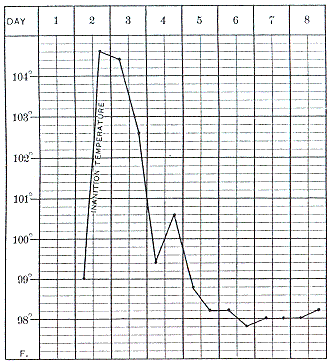
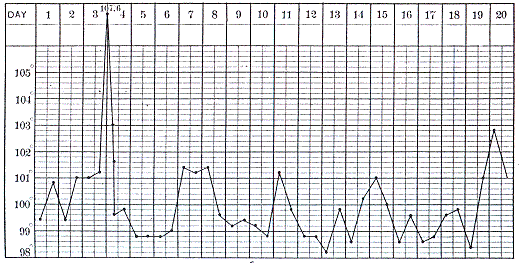
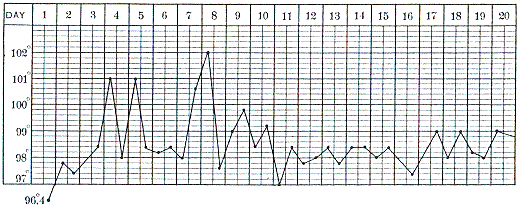
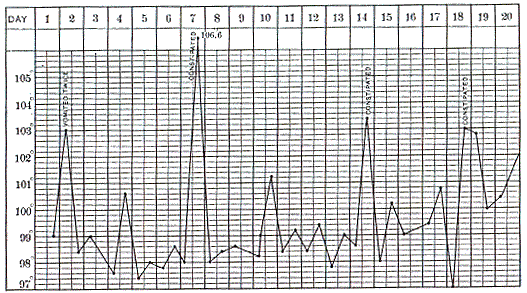
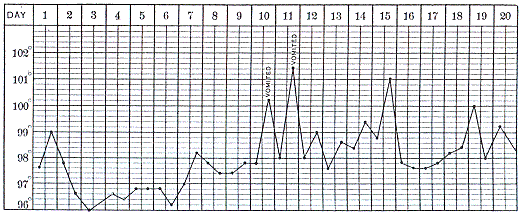
Last Updated on 06/15/24